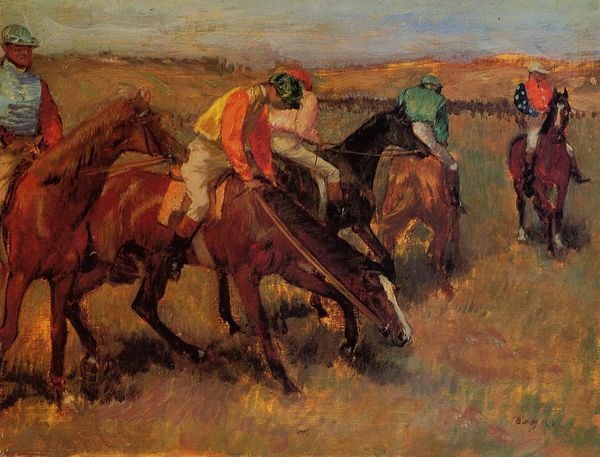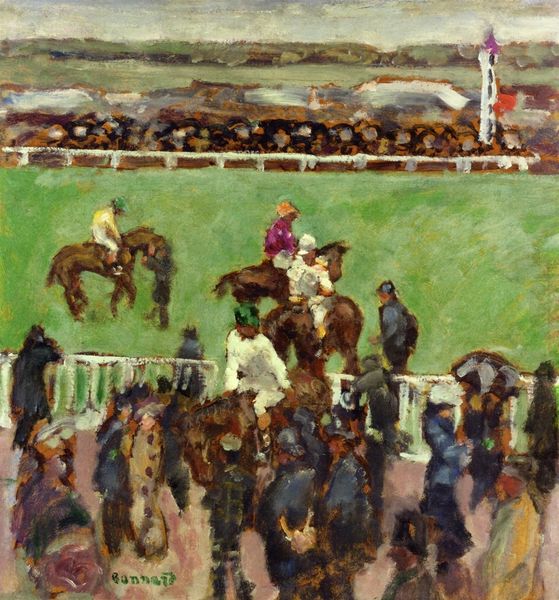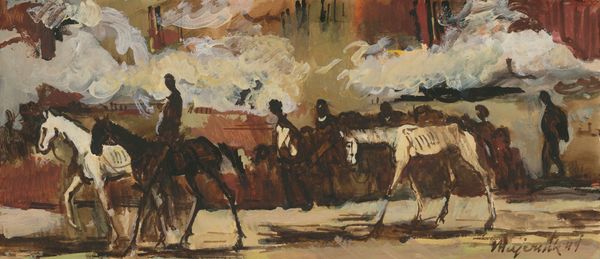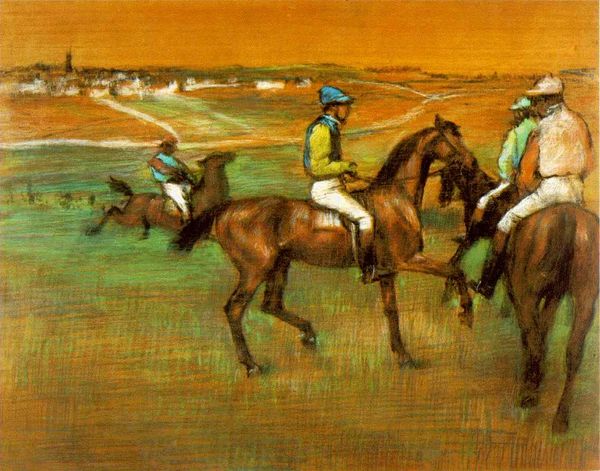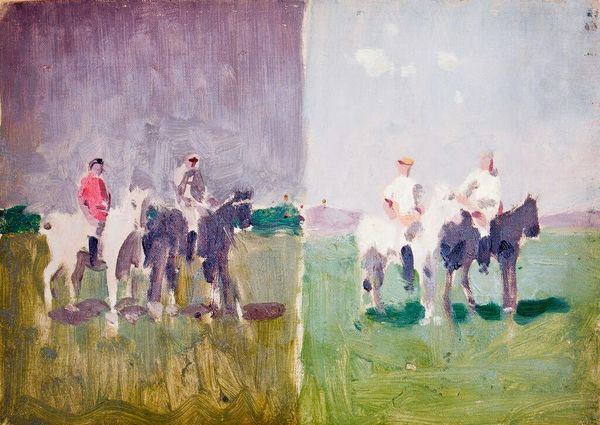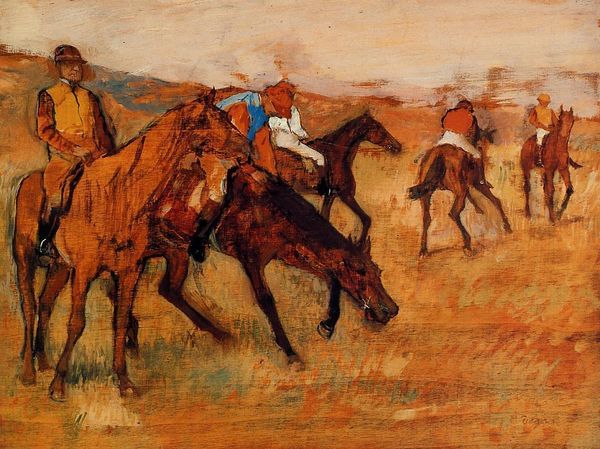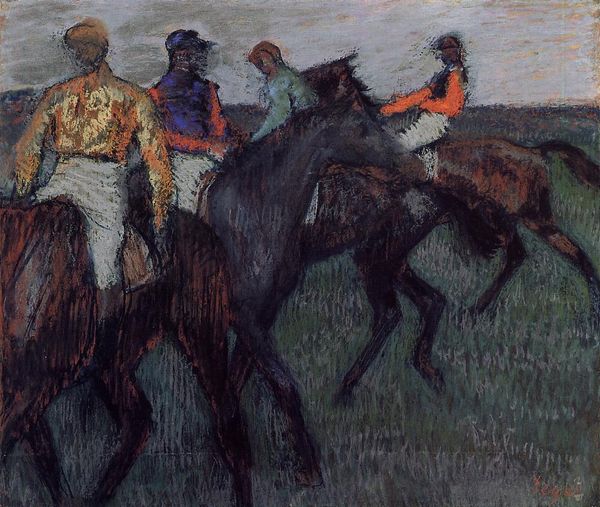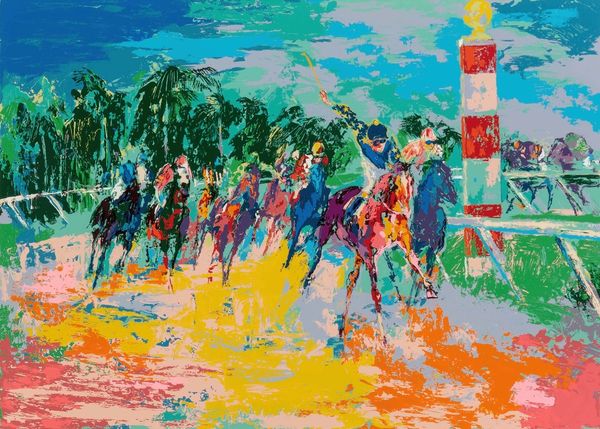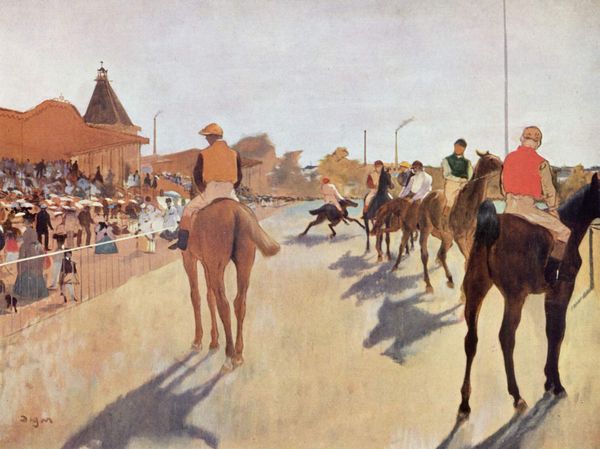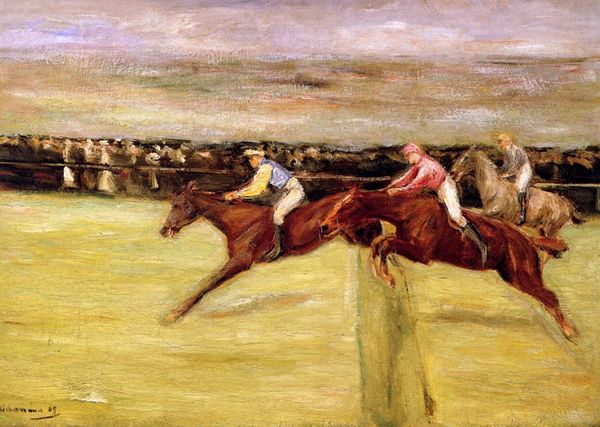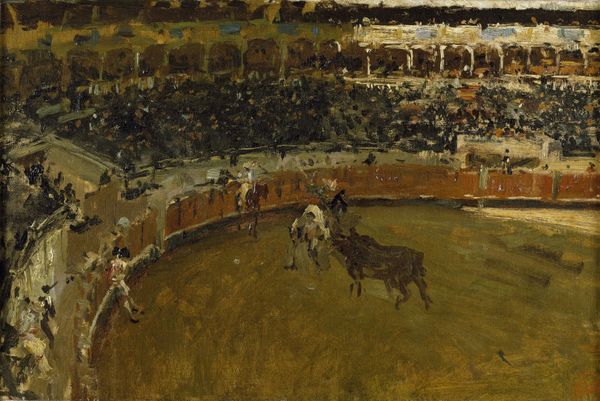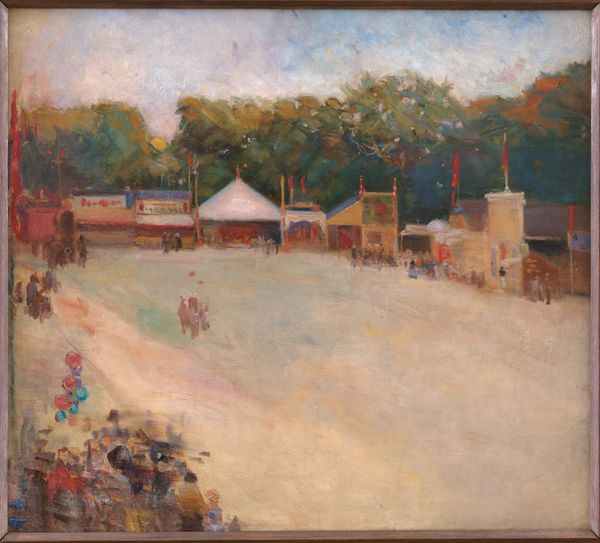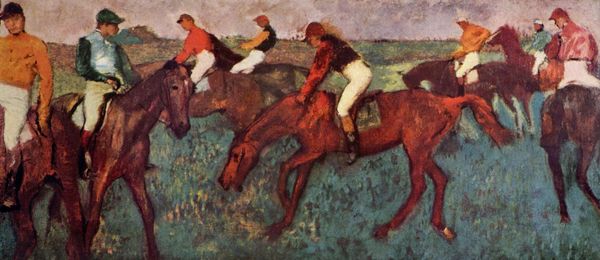
Copyright: Public Domain: Artvee
Editor: So, this is William Glackens' "Race Track," painted around 1908 or 1909. It’s an oil painting, and I’m struck by how vibrant the colors are, almost clashing. The overall impression is exciting but also kind of chaotic. What do you see in this piece? Curator: Chaos is a good word for it. It's easy to look at this and see a snapshot of leisure, but Glackens, belonging to the Ashcan School, often used scenes like these to comment on social stratification and the rapidly changing urban landscape. Consider who had access to leisure activities like horse racing in the early 20th century. Who is present? Who is absent? Editor: Right, it seems like a privileged scene. Were there any specific social or political factors influencing Glackens' depiction? Curator: Absolutely. The Ashcan School, reacting against academic traditions, aimed to depict everyday life, particularly the lives of the working class. Glackens, while sometimes depicting more "refined" subjects like this one, was still invested in portraying the realities of his time. The question is: is he celebrating this spectacle, or is he subtly critiquing the social divides it represents? Are we meant to see the excitement, or question the accessibility? Editor: I hadn’t thought about it as a critique. I was just seeing the energy of the scene, the movement. Now I see the contrast between the privileged viewers in the stands and…well, who exactly is doing the work here? Curator: Precisely! Think about the jockeys, the stable workers – all largely invisible in the celebratory atmosphere. Glackens prompts us to consider those power dynamics. How does the artist portray the landscape in relation to its people? Editor: So, beyond the impressionistic brushstrokes and bright colors, it's a painting that invites us to think about social inequalities. It's definitely given me a different perspective. Thanks! Curator: It is a constant invitation to expand our thinking. Looking closely reveals layers of meaning embedded in seemingly simple scenes.
Comments
No comments
Be the first to comment and join the conversation on the ultimate creative platform.
